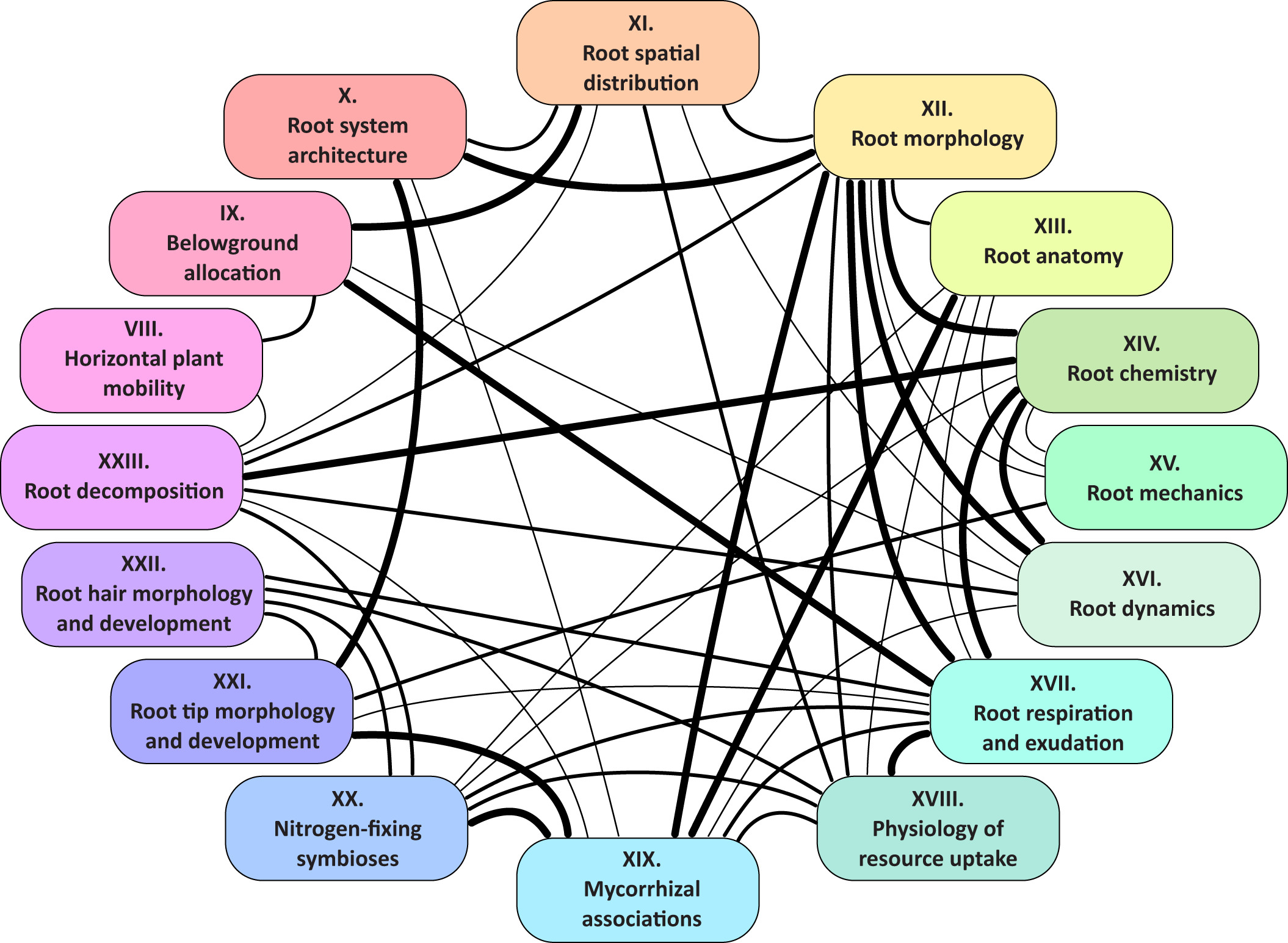October 05, 2021
A Starting Guide to Root Ecology
Strengthening ecological concepts and standardizing root classification, sampling, processing, and trait measurements

Map of trait categories included in the Root Ecology Handbook.
[Reprinted under a Creative Commons Attribution 4.0 International License (CC BY 4.0) from Freschet, G.T., et al. "A Starting Guide to Root Ecology: Strengthening Ecological Concepts and Standardizing Root Classification, Sampling, Processing and Trait Measurements." New Phytologist 232(3), 973–1122 (2021). https://creativecommons.org/licenses/by/4.0/]
The Science
A large team of experts in belowground ecology developed a Root Ecology Handbook, the first “Community Resource” published by the international plant journal New Phytologist. The handbook provides standardized methodology, controlled vocabulary, and important ecological context for developing field and laboratory studies to quantify aspects of belowground ecology, ranging from root physiology to root distribution across spatial gradients. A companion paper critically evaluated the current strengths and gaps in belowground plant trait knowledge and identified future research challenges in the field of root ecology.
The Impact
The Root Ecology Handbook will improve trait comparisons across studies and integration of information across databases by providing standardized methods, controlled vocabularies, and ecological context to improve our quantification of important belowground traits around the world.
Summary
Due to a recent influx of research on plant root functions and their impact on the environment, root ecologists are being challenged to continue generating cutting-edge, meaningful, and integrated knowledge. However, methodology to examine belowground plant ecology is disparate and sometimes inappropriate. A Root Ecology Handbook, based on the collective effort of a large team of experts, will improve trait comparisons across studies and integration of information across databases by providing standardized methods, controlled vocabularies, and ecological context for the observation of important belowground processes, ranging from root physiology to the distribution of roots across spatial gradients. In a companion paper, the team draws on literature in plant physiology, ecophysiology, ecology, agronomy, and soil science to review several aspects of plant and ecosystem functioning and their relationships with a number of root system traits, including aspects of architecture, physiology, morphology, anatomy, chemistry, biomechanics, and biotic interactions. Most importantly, the team found that belowground traits with the broadest importance in plant and ecosystem functioning are not those most commonly measured. Taken together, the aim of these companion papers is to help break down barriers between the many subdisciplines of root ecology and ecophysiology; broaden researchers’ views on the multiple aspects of root study; and encourage new, comprehensive experiments on the role of roots in plant and ecosystem functioning.
Principal Investigator
Colleen Iversen
Oak Ridge National Laboratory
iversencm@ornl.gov
Program Manager
Daniel Stover
U.S. Department of Energy, Biological and Environmental Research (SC-33)
Environmental System Science
daniel.stover@science.doe.gov
Funding
This work was part of the Terrestrial Ecosystem Science Scientific Focus Area (TES-SFA) at Oak Ridge National Laboratory (ORNL). TES-SFA is supported by the Office of Biological and Environmental Research’s (BER) Environmental System Science (ESS) program within the Department of Energy’s (DOE) Office of Science.
Related Links
References
Freschet, G.T., et al. "A Starting Guide to Root Ecology: Strengthening Ecological Concepts and Standardizing Root Classification, Sampling, Processing and Trait Measurements." New Phytologist 232 (3), 973–1122 (2021). https://doi.org/10.1111/nph.17572.
Freschet, G.T., et al. "Root Traits as Drivers of Plant and Ecosystem Functioning: Current Understanding, Pitfalls and Future Research Needs." New Phytologist 232 (3), 1123–1158 (2021). https://doi.org/10.1111/nph.17072.

